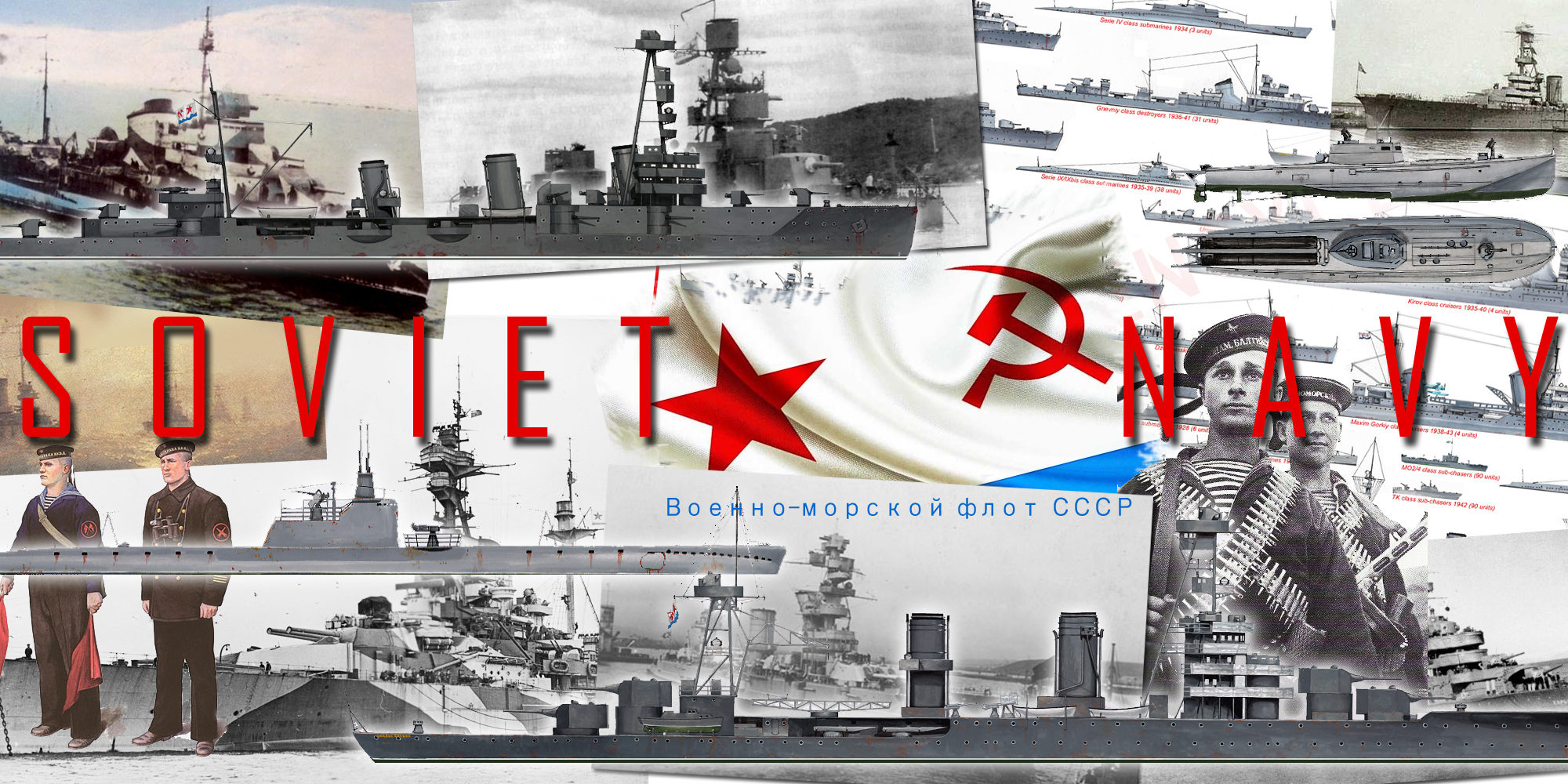
Voyenno-morskoy flot SSSR
 The Soviet Navy 1921-1945
The Soviet Navy 1921-1945
The Soviet Navy that fought in WW2 was a small (comparatively however on a larger scale than the kriegsmarine) in 1941, but with losses and fall in wartime production, dwindled rapidly; Nevertheless she was still an asset that Stalin used at best in the black sea and the Baltic until 1945. Riverine forces, of all these, were probably the most heavily involved into the fight due to the abundance of large rivers and tributaries from where they can operate from.
Some armoured gunboats even fought in the battle of Berlin, making their way on the Spree. The actions of marine troops at Sevastopol, Leningrad or Stalingrad are also all to be remembered. The aura of revolutionary fervor and loyalty to the regime was linked to actions going back to the Potemkine mutiny in 1905 and the large scale revolts of the black sea in 1917 culminating with the decisive action of the cruiser Aurora in St Petersburg, since kept as a precious relic.
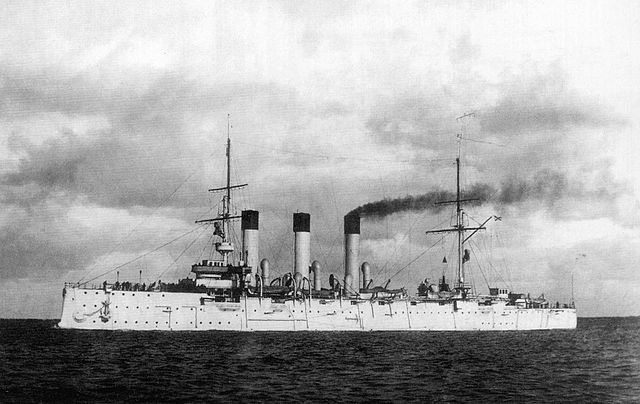 The Aurora was the famous cruiser that took part in the St Petersburg October revolution.
The Aurora was the famous cruiser that took part in the St Petersburg October revolution.
State of the Soviet navy in 1921
 In 1921, the party decided to reconstitute a fleet, counting existing units in relative good condition, given the time it would take to make the devastated shipyards operational. The balance is made of the units to be retained.
In 1921, the party decided to reconstitute a fleet, counting existing units in relative good condition, given the time it would take to make the devastated shipyards operational. The balance is made of the units to be retained.
And it is heavy: More than 75% of the surviving ships still afloat are in such a state and of such seniority, that they are decided to send them to scrap, especially in Germany. However, efforts were successful and in 1922, concentrating on the units of value, a “fleet” of the Baltic was established, comprising 1 battleship (Marat class), 1 cruiser, 8 destroyers and 9 submersibles. But also 1 cruiser, 2 destroyers and 2 submersibles for the Black Sea.
Latest articles and upcoming
- Chapayev class cruisers
- Gangut class battleships (1911)
- Kirov class cruisers
- Light Cruiser Krasny Kavkaz (1916)
- Novik class destroyers (1911-1917)
- Profintern class cruisers
- Sovetsky Soyuz class battleships (1938)
- Soviet Aircraft Carriers Projects
- Soviet Riverine Gunboats and Monitors
- Tashkent class destroyers (1937)
- ww2 soviet cruisers
- WW2 Soviet Destroyers
- ww2 Soviet Minesweepers
- ww2 Soviet Motor Torpedo Boats
- ww2 soviet sub-chasers: MO types, BO types and guardships
- WW2 Soviet submarines
Kronstadt class battlecruisers
Leningrad class Flotilla Leaders (1933)
Kiev class Flotilla Leaders (1940)
Gnevnyi class (1936)
Storozhevoi class (1936)
Opytinyi (1935)
Ognevoi class (1940)
AG class (1920)
Series I (1928)
Series II (1931)
Series III (1930)
Series IV (1934)
Series V/V bis (1933)
Series VI/VI bis (1933)
Series IX/IX bis (1935)
Series X/X bis (1936)
Series XI (1935)
Series XIII/XIII bis (1937)
Series XV (1940)
Series XIV (1938)
Series XVI (1947)
Soviet ww2 guardships
Yosif Stalin class icebreakers
1926 naval plan
In 1926, with the restarting of the shipyards, 2 other battleships could be put back into service, as were 1 cruiser, 13 destroyers, 14 submersibles. The plan for the reconstruction of the merchant fleet had been started in 1925, and the Soviet fleet was naturally prepared to do the same. Approved in November 1926, this five-year plan provided for the construction of 12 submersibles, 18 coast guards, 36 MTBs, and the modernization of two cruisers, 4 destroyers and a few other units.
This plan was revised in 1929, with permission to build three heavy, 10 submersible, 16 MTBs and two river monitors. The reconstruction of the three battleships and a cruiser was also under study.
1933 naval plan
The second five-years plan of 1933 was beginning a turn when the naval defense strategy, relying on a large number of submersibles and torpedo boats, coast guards and river monitors, favored the staff. This plan focused on submersibles, of which 355 were scheduled, as well as 194 MTBs and 4 river monitors, as well as 10 heavy squadron and 20 destroyer destroyers. It was redesigned to finally establish itself at 155 submersibles, 248 MTBs, 49 destroyers and 9 destroyers leaders, but also 4 heavy cruisers.
Technically, the Soviets were very much in demand for advice and help from French, German, English, and especially Italian engineers. (Kirov), and brought their know-how to the new class of destroyers (Gnevnyi), and built the entire heavy destroyer Taschkent. The French brought their advice for the design of the heavy destroyers of the Kiev class, and the Germans, under cover of their office installed at the Hague, studied designs that were taken over by the Russians for their submarines.
1938 naval plan
The third five-year plan of 1938 was by far the most ambitious, under the personal guidance of Stalin, who was more anxious than ever to give the USSR a maritime strategy that went from defensive to resolutely offensive. The advocates of the defense strategy within the Admiralty were no longer heard… The purges had gone by.
In fact this plan foresaw for the first time fast battleships and battle cruisers, those planned and built shortly after the London naval conference in 1936, ending the moratorium initiated in Washington. In total these were 19 battleships, 20 cruisers, 18 squadron destroyers, 145 destroyers, 341 submersibles, 514 MTBs, and 44 river monitors. These figures were subsequently reduced, and in order to compensate for the lack of funds, the classes were standardized, with a view to simplifying production.
Soviet Naval Power in 1939
With a grand total of about 403,000 tonnes, the Soviet navy was classed seven in the world’s order, behind the Kriegsmarine.
On the strategic point of view, the emphasis was placed in the 1930s on defensive means, mostly MBTs and submarines, with a limited construction program of cruisers and destroyers (designed in Italy) which size was tailored for the Black sea (first) and the Baltic, plus the far east Vladivostok station being sacrificed. Light cruisers left in shipyards by 1916-17 has been thoroughly modernized, sometimes entirely rebuilt like the Krazniy Kavkaz, as well.
Tonnage in sept. 1939 |
|
| Dreadnoughts | 75,000 |
| Cruisers | 29,297 |
| Destroyers | 96,237 |
| Submarines | 119,594 |
| Misc. | 84,309 |
Soviet Battleships
In 1941, the Soviet forces could count on three completely reconstructed and modernized dreadnoughts battleships, the Gangut (Octyabrskaya Revolucya), an economic solution for all nations. Indeed, in 1941, the number of new “super-dreadnought” or fast battleship units in service in the world was quite limited. Treaty of Washington obliges. At the time when the latter was signed, Russia was naturally excluded, being still in chaos. Then there was the lack of budgets and infrastructure that prevented him from embarking on this type of project.
But from 1935, the Soviet Union finally had the will and the means to re-design ships of the line. In no way constrained by a treaty it had never signed, it was completely free to constitute a fleet without limits of tonnage and units individually well beyond the standards of the time. But this was not the case.
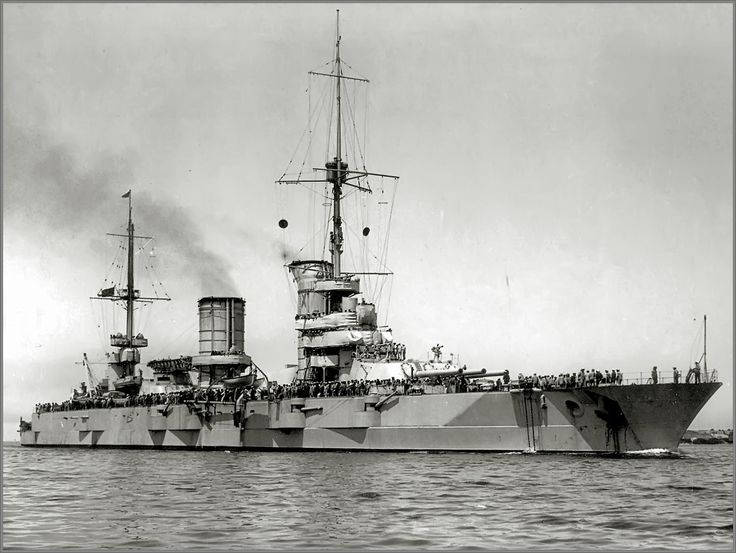
Battleship Parizhskaya Kommuna (“Paris Commune”) as rebuilt in the late 1930s.
The USSR had planned ships of the line, rather late (see below). The fleet could have been reinforced with the old dreadnoughts Imperatritsa Mariya (former Tsarist name, launched in 1913-14), but of the three units of the class, only the Volya survived the great war, entered the camp of the whites during the Civil war and was deactivated in 1925 and demolished in 1936, under French control.
The great battleship imperator Nikolai I, begun in 1915, launched in 1916, was captured incomplete and demolished by the Germans to prevent it from falling into the hands of the “reds” in 1919. The four powerful battle cruisers of the Borodino class, Would have also come into service in 1917-18, but were all demolished by the revolution and demolished in 1923, except for the Izmail, which was still being worked on for some time, and which was demolished, In 1931.
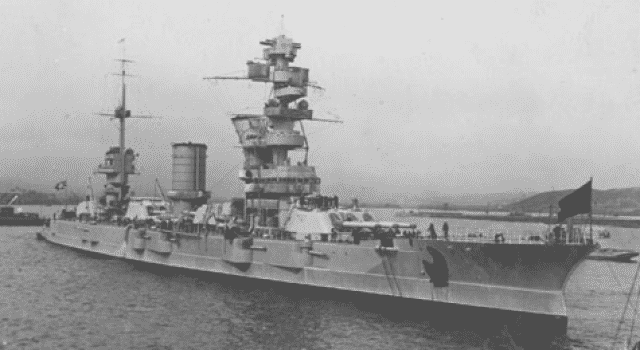
Battleship Marat in Gdynia
First projects: The battleships of the Sovietskiy Soyuz class: These three units, which were put on hold in 1938 and 1939 under the first plan, remained unfinished because of the hostilities. The hulls were demolished in the 1940s.
The battle cruisers of the Kronstadt class, begun in 1939, were hardly more advanced. Second projects: Under the 1943-47 plan, and revised for the 1950-56 plan, the three major battle cruisers of the Stalingrad class saw their construction postponed to the 1950s and eventually demolished, with priority given to More reasonable and modern ships after the death of Stalin.
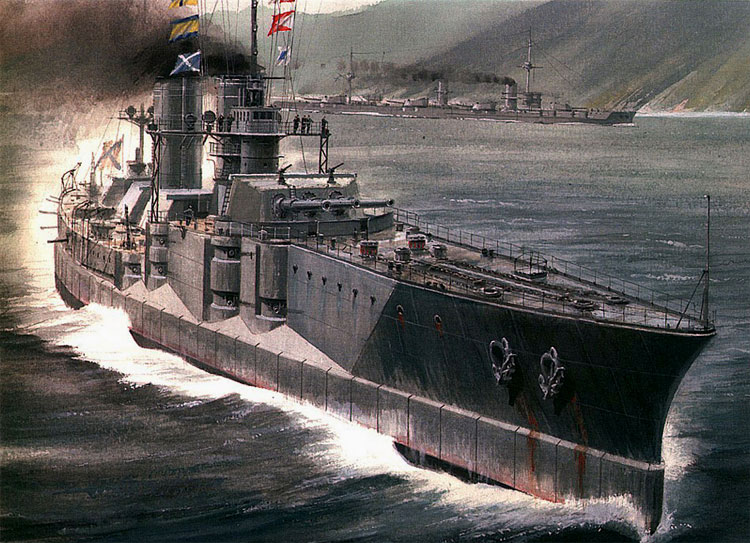
Stunning artist impression of the Borodino class battlecruisers
Soviet Cruisers
In 1941 the fleet consisted of 8 cruisers, the oldest being the Komintern (ex-Pamiat Merkurya, 1904), a training ship; The famous Aurora, because it was retained as a floating museum of the revolution from 1948 onwards and was put back into service in 1923 as a cadet training ship until 1931, Leningrad, until the invasion, bombed by the Luftwaffe then scuttled to avoid being captured. It was bailed out in 1944 and repaired, restored to its original condition of 1917. It is still on display and constitutes one of the Kitsch tourist attractions of Leningrad today.
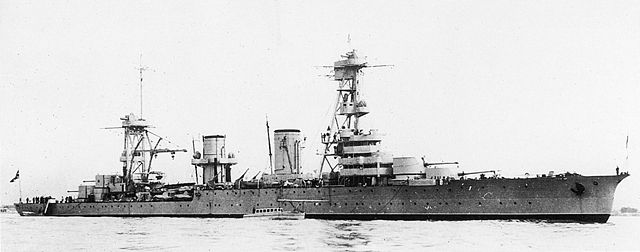
Krasnyy Kavkaz, 1930s
The Svetlana class cruisers, built in 1913 and of a first class which was to comprise 6 units, suffered the vicissitudes of the conflict and only the three most advanced units entered service , The Chevronya Ukraina (formerly Admiral Nakhimov) in 1927, the Krasny Krim (formerly Profintern, formerly Svetlana) in 1928, and the Krnasny Kavkaz (formerly Admiral Lazarev) in 1932. Nothing more to do with the other two. The first two had a relative military value because of their outdated design.
The most effective and recent cruisers of the Russian navy were those of the Kirov class and Maxim Gokiy. The former had been built as the latter in the Soviet Union, but their conception was almost entirely Italian. In fact, they recall certain ships of this navy. However, they have certain peculiarities such as the adoption of 180 mm triple turrets in the main artillery, an unusual configuration (standard 203 mm – or 8 inches, of heavy cruisers or 152 mm – or 6 inches, of light cruisers).
But by their tonnage and comparison with older units, they come under the category of heavy cruisers. The two Kirovs were completed in 1938 and 1940, Maxim Gorky in 1940 and Vyacheslav Molotov in June 1941, on the 6th, almost 15 days before the German invasion (22 June). The other two units of the class, the Kaganovich and the Kalinin, were only ready in 1943 and 1944. Finally, the cruisers of the Chapayev class, started in 1938-39-40, launched in 1940 for the first, Will only be completed well after the war.
Soviet destroyers
The Soviet fleet inherited the impressive herd of the Tsarist navy, whose lineage of formidable units derived from the Novik of 1904, at that time the most powerful destroyer of the globe. In reality virtually all the old units had been lost in the turmoil of civil war. However, the fleet rehabilitated a number of units: In 1941, it had a few ships of the Donskoi Kazak class, as well as other pre-Tsushima destroyers (reclassified as gunboats) and 16 Novik class ships. The last were from 1914-16, the first of 1904.
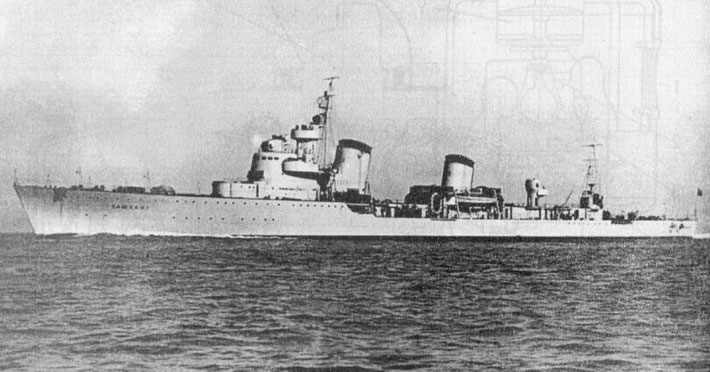
“Blue Beauty” (Tashkent) out of OTO Liverno shipyards in Italy, bound to Sevastopol to be fitted and armed
Heavy destroyers in service in 1941 were also referred to as destroyers leaders, and these were so heavy units in their class, that they ended sometimes equated with light cruisers.
These were the 6 units of the Leningrad class and the Taschkent, “blue beauty”. The latter, contemporary with the Kirov, was also designed by the Italians, but it was even built in Italy, in Livorno. She was hailed as the most beautiful warship of its time. Other heavy destroyers of the same model as the Taschkent were to be produced in the USSR, the Kiev class, but they remained unfinished.
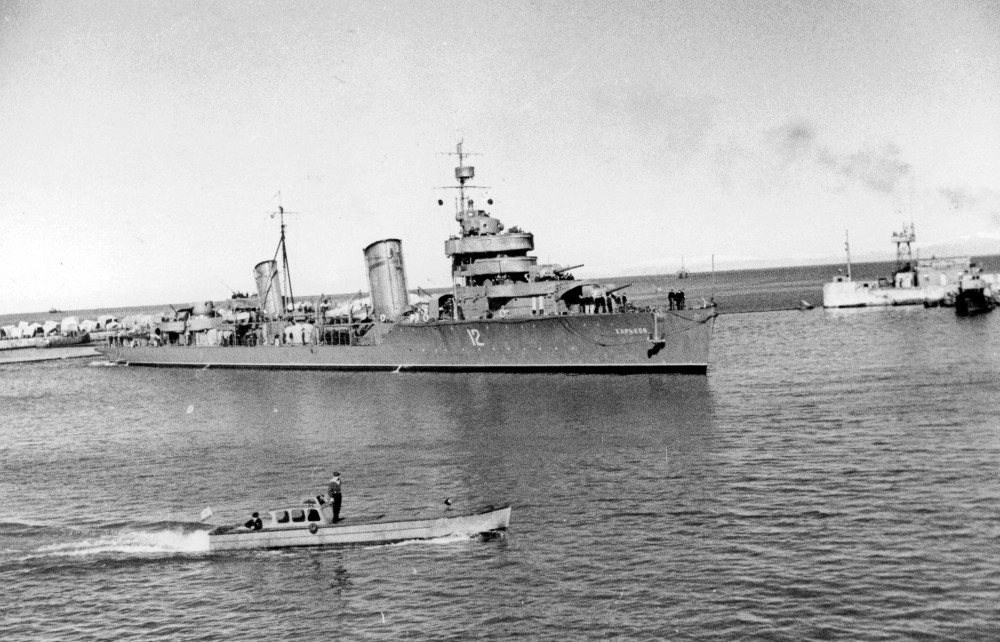
Destroyer leader Kharkov
Most of the standard destroyers were the units of the 1936 plan, the Gnevnyi class, which will comprise 31 units, and those of the Storozhevoi class (20 units), and the unique Opytnyi. The Ognevoi class was much more modern, but the units were launched in 1940, two of which were completed in 1944 and the rest in 1945-48. This class was to comprise a first group of 24 units, but it appears that only 14 were created.
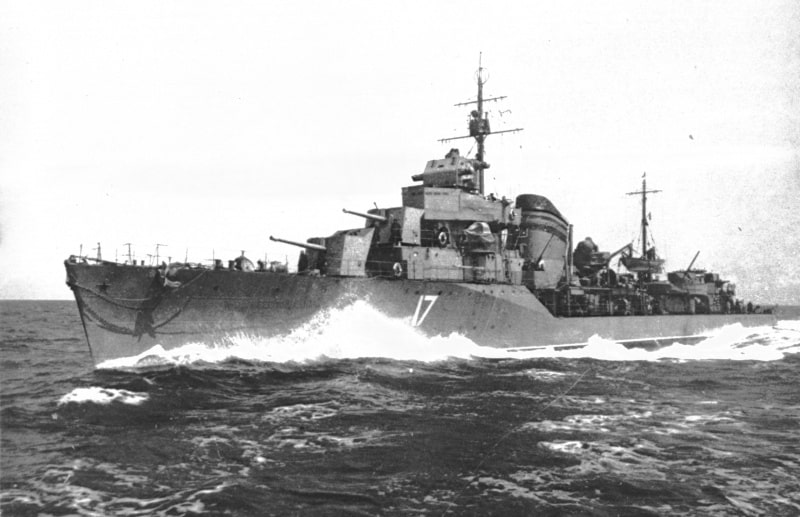
Soviet destroyer of the black sea fleet
Soviet submarines
The strategists of the Soviet Admiralty envisioned a form of naval defense close to the French theories of the young school, with few heavy units but many torpedo boats, minesweeper, submersibles and coast guard. The fleet of Russian submarines in 1941 was the largest in the world, ahead of Germany. It was classified into three categories: oceanic, medium-coastal, and light-coastal. The oldest in service were the four of the AG class (1916-23), of American origin, and the Bezbozhnik, a former British submarine of the L class, sunk by “red” destroyers in Konstadt, Then captured and returned to service in 1931.
The oldest were oceanic types of series I, comprising six units (1928-29), followed by series II (6), series XI (6), series XIII and XIII bis (7 and 6). The latter, assimilated into a single “L” class, were minelayers completed shortly before, during or after the invasion. The series IV (1934) was an unfortunate experiment of “submarines of squadron”, comprising 3 units, series XI, oceanic standard model (38 units), and series XIV (12), the last of these Classes, completed during the war.
Submarine M32 of the coastal XII serie
The medium-sized submersibles (general class Schch) included the four units in series III, 40 in series V, V bis and V bis-2, 33 in series X and 12 in series X bis During the war). The fleet of light coastal submersibles (general class M) comprised 50 of class VI and VI bis and 50 of class XII and XII bis, the last of which entered service in 1942. The XV-series units entered Service well after the German invasion, the first 3 in 1941-42, and 3 others after the war.
Soviet Misc. ships
In 1941 the Russian fleet had a large number of coast guard frigates, light but powerful ships. These were the Yastreb (8), Albatros (12), Dzerzhinsky (2), Uragan (18) and Rubin. The latter were related to the coastal minesweepers of the Tral class. This class consisted of 48 units, the last of which were in service just at the time of the German invasion. The Russians also had 4 ex-Lithuanian units captured (T297), old units such as Amur, Minrep, Kluz and Udarnik, and the modern T301. Ships of type T371 will follow, but these will only enter service from 1943, and their series will continue until 1956 to the extent of 250 units.
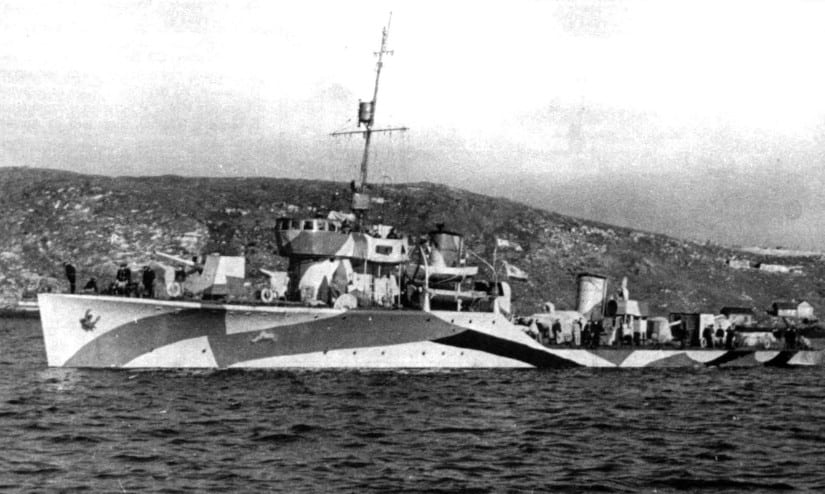
Uragan class gunboat, during the war
USSR also possessed riverine gunboats, the oldest being the Krasnoye Zamya, totally rebuilt, and 3 river monitors of the Shkval class. There were also the Korall, a former Lithuanian ship, integrated in June 1941, the river monitors of the Udarnyi (2) class, Zheleznyakov (6), and the 1124/1125BKA and MBK, armed with standard tank turrets, 85 In service in June 1941, 68 in the process of completion, and 110 rapidly completed, totaling 270 till 1945.
Mineshunters were also part of the force, including the Marti, a formerly rebuilt Shtandart imperial yacht, and Two Suurop (ex-Estonian), and the two netsmen of the Oneya class (barges reconverted in 1941). Moreover, their circulation in the Arctic depended on the four armed icebreakers of the Yosif Stalin class (1937-39).
Submarine chasers were also part of its strength, the MO2 type MO2 and the MO4 type MO4, and the larger BO2 units. One of the spearheads of its coastal defense was a large fleet of torpedo boats, the Sh4 (52), G5 (292), and D3, the latter mostly built during the conflict, of which about ten (Out of 139) were in line in 1941. The last, class Komsomolec, will be built only in 1944-45, and affected against Japan. So in total (based on questionable figures) comprised 44 coastguards, 57 minesweepers, 98 gunboats including 93 inland waterways, 3 minesweeper, 126 submersibles and 400 MTBs.
The Soviet Navy in Action (1941-45)
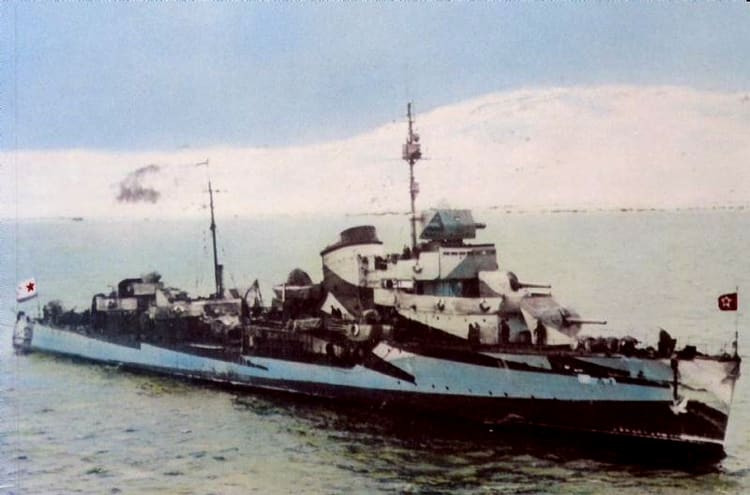
Camouflaged Soviet destroyer; Straight line patterns were preferred
During the war, the Soviet fleet received a certain number of units from the allies: The battleship Arkhangelsk (ex-Royal Sovereign, Resolution class) arrived in reinforcement in August / September 1944, as well as the cruiser Murmansk, ex -USS Milwaukee, Omaha class, in April 1944. The USSR also received a group of eight ex-British ex-British destroyers, the famous mass-pipe-pipeers of 1917-19, under the name of class Dostoinyi.
4 Romanian destroyers were captured by the Russians and integrated in 1944 into the Black Sea fleet. These were the Letuchyi, Likhoi, Logkiy, Lovkiy, ex-Regele Ferdinand and Regina Maria, Marasti and Marasesti, as well as three Romanian submersibles (S3, 4 and TS4 ex-Requinul, Delfinul, Marsuinul.). It will integrate 4 other ex-Latvian and ex-Estonian submersibles (Ronis, Spidola, Kalev, lembit) into the fleet, and received 4 British submarines of the S and U classes, named V1 to V4.
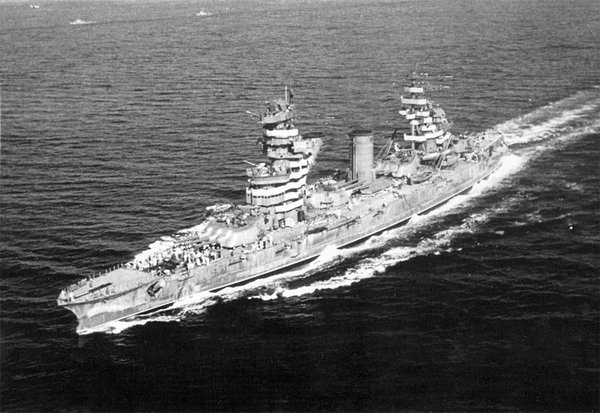
More modest units were also transferred, 28 class EK1 (former Tacoma class) escort in 1945, for the Pacific front; 34 minesweepers T111 (ex-US, class Admirable), of which 10 in 1943 and the others in 1945; 15 ex-British coastal minesweepers in 1944-45; 43 lightweight minesweepers (ex-YMS class, Americans) in September 1945, to which were added Vosper (British, 90 issued in 1944-45) and Higgins (Americans, 43 delivered between 1943 and 1945) Elco (Americans, 60 delivered in 1944-45, 202 other deliveries including 53 in sections and spare parts). The Americans also delivered 138 submarine chasers of the SC, OTC and RPC classes to the USSR from mid-1943.
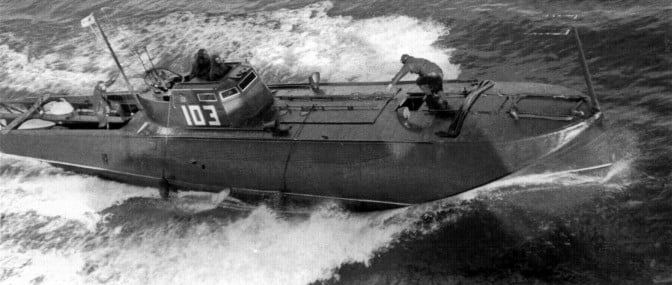
Sh4 class MTBs
During the conflict, man-made buildings, such as heavy units, battleships, cruisers, were abandoned or postponed, and light units were given priority (especially since the large ports, on the western side in the majority, were very quickly In addition to the Kalinin and Kaganovich (Gorkiy class) cruisers sufficiently advanced to be completed, there were also two Ognevoi class destroyers, a few Schch, M and K submersibles. (4 units between 1942 and 1945), and the T371 class coastal ships, a total of 145 vessels and 250 vessels after the war.
At the end of the war, about 20 Komsomolec-type VLTs were also issued to face Japan, 15 class BO2 submersibles, 100 MBK river monitors, 1,000 light minesweepers Classes R, K and MSV, KM4 and KM5, as well as about 100 patrol boats of the PK and MKM class.
All these units took an active part in the conflict, in spite of the mainly terrestrial character of the operations, for the river monitors being one of the original maps of the Russian arsenal with armored trains.
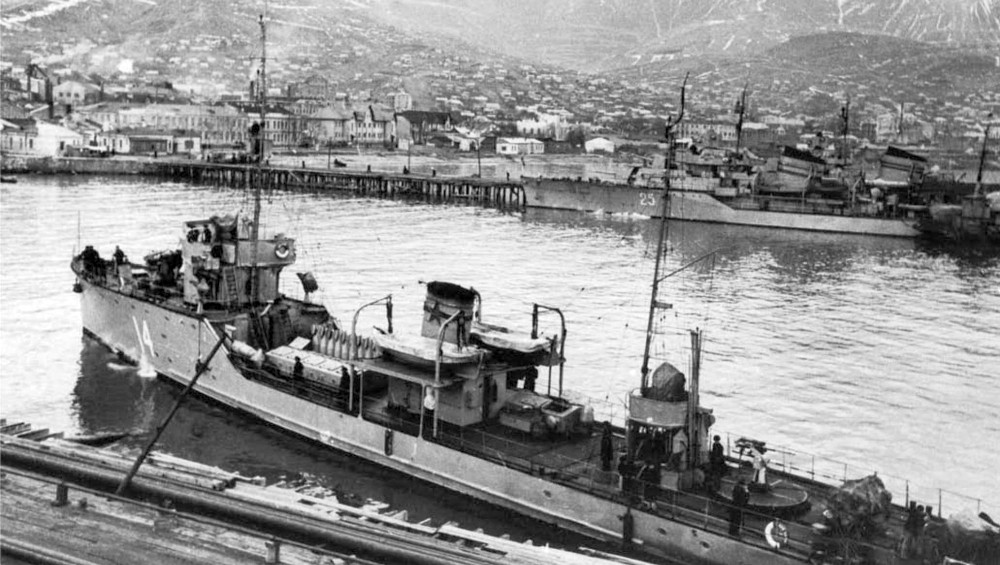
T404 class minesweepers
Many losses were reported in the Black Sea as well as in the Baltic Sea, and especially in the Arctic, where the U-Boats were carrying out a carnage, despite the considerable escort allocated to the transport of weapons and supplies, USSR from 1942. Losses were numerous, both for submersibles and destroyers (more than a third), and heavy units such as the battleship Marat, victims of the Luftwaffe, or the cruiser Chervona Ukraina.
The greater part of the Russian fleet was a victim of land forces, itself serving as a fire support for the Black Sea’s strongholds such as Sebastopol, or the Baltic as Leningrad. The paradox of this war was, as it were for the campaign of France, the uselessness of a fleet in operations. The only units massively deployed and in direct contact with the enemy were thus hundreds of armored fluvial gunboats (On the Volga, the Amur and the Western Prut, the Dnieper and the Don.).
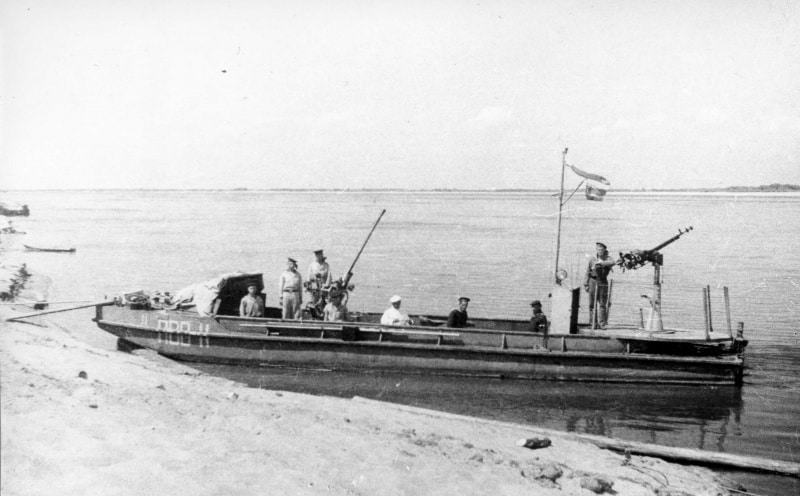
Riverine fleet on the Volga. The Soviet Navy was mobilized to cross the Volga several times a day, carrying into the furnace thousands of fresh troops
The allies strongly criticized the inefficiency or worse, the inaction of the Soviet naval forces present in the Arctic. The convoys of Murmansk and Arkhangelsk were in fact escorted only by British ships which were supposed to pass the relay to Russian units arrived halfway. Now, as the navy and the Russian air force, having no coordination and their individual initiatives hampered by a heavy bureaucracy, did not rise to the task of facing the Kriegmarine and the Luftwaffe operating from their base Norway.
There were, on the spot, few units of value, no cruisers, no battleships to oppose German liners and cruisers before the transfer of two ships transferred under the leasing law ( Bearing the names of the ports concerned by these operations). The latter, moreover, were elderly (the United States and Great Britain were reluctant to entrust the “reds”, allies of circumstance, valuable ships, fearing probably to have to find them in front of them later) and their confrontation With the Tirpitz or even with the pocket cruisers would have been undoubtedly disastrous. The Royal Navy preferred not to venture its heavy units for fear of the Luftwaffe.
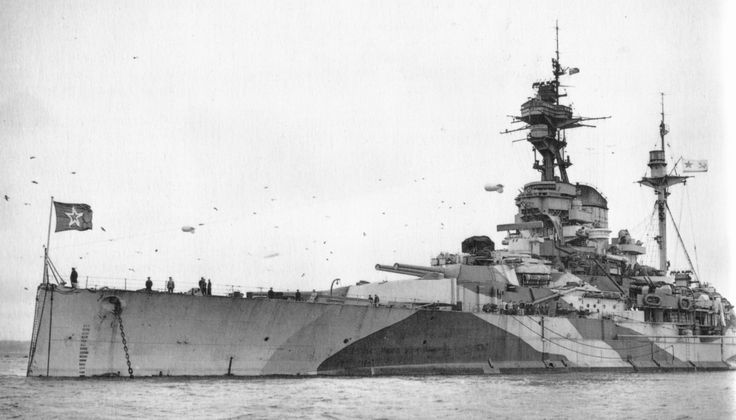
Battleship Arkhangelsk, lend by the British (ex. HMS Royal Sovereign) for the duration of the Arctic convoys.
When the operations in Finland were carried out, they reflected the obstinate and devilish defense of the Finns at sea. The Gulf of Bothnia and Lake Ladoga, among others, were full of minefields, from which a considerable number of Russian units exploded, The Finnish navy having been since 1939, captured or put out of action for the greater part.
On August 8, 1945, a short Soviet offensive was launched with the forces liberated from the Western Front and transferred to the East since May. The modest fleet of the pacific took an active part in it. Marshal Vassilievski engaged more than 1,200,000 men, 5,500 tanks and 4,000 planes against General Otozo in the Kuangtung, with the aim of taking back Manchuria, North Sakhalin Island, the Kurile Islands and the north of the Korean Peninsula, before That peace be signed. In a few days, it advanced and encircled with the help of Chiang Kai shek from the south, the main Japanese forces, which surrender on the 19th. But the campaign continued on other fronts – September, the end of the war).
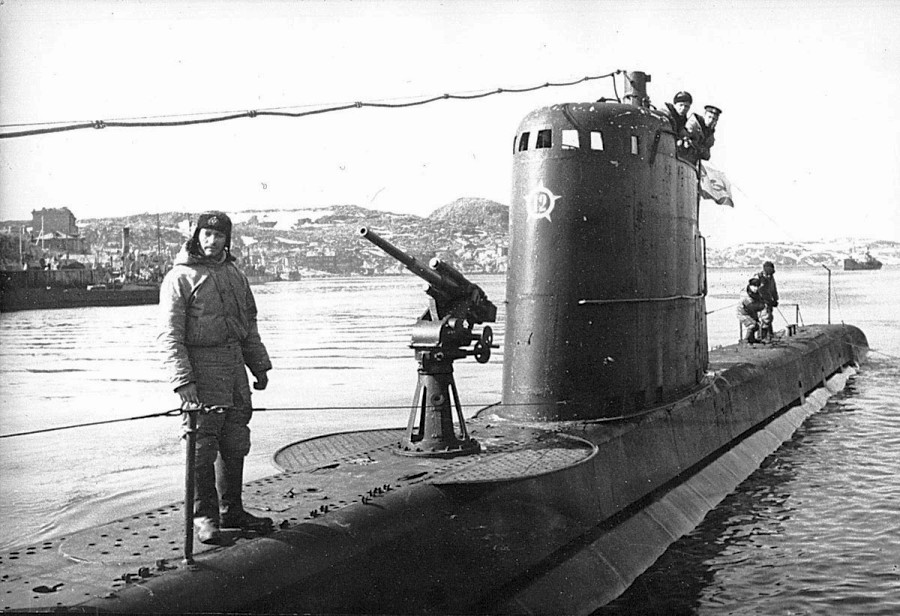
Fisanovich – ace commander of M-172 submarine (credits www.wio.ru)
The singularity of the Russian “naval operations” thus brought only a reduced teaching to the Admiralty to define its post-war policy. They only confirmed the commitment to a defense policy based largely on submersibles and light units. There was only Stalin’s express will to persist in a classic, “Mahanian” vision of line fleets.
The presence of an aircraft carrier would have been of great help, however, if only to protect its units, track the U-boats, repel the Luftwaffe. The lack of a true naval aviation was cruelly felt: the latter was only formed in the 1960s. Finally, the naval development of the USSR was still accelerating in 1945: When the rearmament plan arrived at its In 1958, the Soviet fleet was ranked second in the world, above the Royal Navy.
Soviet Naval Forces, listing
List of Soviet ships and articles |
|
| Battleships | Gangut class |
| Cruisers | Kirov, Gorkiy, Ukraina, Kavkaz, Komintern classes |
| Destroyers | Leningrad & Tashkent (heavy), Gnevnyi, Storozhevoi, Opytny, Sverdlov (Novik), Ognevoi |
| Submarines | Series I to XV |
| Misc. Coast guards | Dzerzhinsky, Uragan, Yastreb/Albatros |
| Minesweepers | Polukhin, Tral, T301, MTBs |
| Monitors & gunboats | Coastal – Riverine |
| Submarine chasers | MO2, MO4, BO2, BMO, TK and BO201 classes |
| Minelayer | Marti, Onyega class, Suurop (1940), Don (1944) |
| Minesweeping launches | R, K, MSV, KM4, KM5, PK, MKM classes |
| MTBs, attack crafts | ANT, Sh4, G5, D3, Komsomolec, prototypes |
| Armoured Motor launches | 1124BKA, 1125 BKA, MBK |
| Icebreakers | Stalin class |
| Naval air force | See the article |
| Projects & what-ifs | See the article |
| Soviet Navy camouflage | See the article |
Soviet Naval Infantry

Author’s rendition of Soviet Naval Infantry’s roles and equipments in WW2
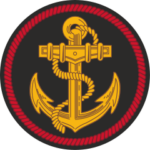 The Morskaya Pekhota Rossii or Russian Naval Infantry is an institution that crossed regimes (Tsarist, USSR, Russian Federation) and remained a very potent force today. Its creation is going back straight to the effort to create a navy from scratch under Tsar Peter the Great in the 17th Century. It was indeed established in 1705, at first as contingent aboard all large ships to bolster boarding combat, but also proved capable of conducting amphibious operations and later, to operate as traditional light infantry. Since the subject will be treated in detail in the XIXth, WW1 Russian Navy articles, it’s good to point out the specifics of Soviet Naval Infantry between the interwar to 1945 and its wartime actions.
The Morskaya Pekhota Rossii or Russian Naval Infantry is an institution that crossed regimes (Tsarist, USSR, Russian Federation) and remained a very potent force today. Its creation is going back straight to the effort to create a navy from scratch under Tsar Peter the Great in the 17th Century. It was indeed established in 1705, at first as contingent aboard all large ships to bolster boarding combat, but also proved capable of conducting amphibious operations and later, to operate as traditional light infantry. Since the subject will be treated in detail in the XIXth, WW1 Russian Navy articles, it’s good to point out the specifics of Soviet Naval Infantry between the interwar to 1945 and its wartime actions.
Naval infantrymen who served under the Tsarist Navy, often based in fortified arsenals and naval bases like Kronstadt, would later on form the core of the Soviet naval infantry service from 1918 onwards. They already distinguished themselves in the October 1917 revolution, and later taking a prominent part in the long Russian Civil War until 1922. Many also joined the White movement under command by Admiral Kolchak, and distinguished themselves for their fierce anti-Soviet military operations, and shot upon capture or tortured and killed.
After 1922 the RKKA reconfigured naval infantry along several larghe units.
The Baltic Fleet Naval Infantry comprised the ex-Imperial fleet division and from the first shots from the cruiser Olympia to the storming of the winter Palace they became the staunchest supporters of the ealy regime.
The Kronstadt rebellion in 1921 saw hoever Naval Infantrymen stationed in Kronstadt mutinied against the new Soviet government in 1921. It was vigoroulsy put down and harsh retribution, moslty executions.
During World War II there was a contingent of 350,000 Soviet Navy sailors which took part in land operations. This was notably due to the fleet being mauled down by the Luftwaffe in the summer of 1941 and the war taking an overwhelming ground combat aspect, apart actions led from rivers. That summer, the Navy only had a single naval infantry brigade as part of the Baltic Fleet, and quickly creating and training other battalions:
-6 naval infantry regiments (2x 650 battalions each)
-40 naval infantry brigades (5–10 battalions each) from surplus crews.
-5 Guards brigades.
Many of the new units were part of the Black Sea, Pacific and Northern Fleets which saw little action at sea. The critical military situation in 1942-43 ensured they would be deployed for the defense of Odessa, Moscow, Leningrad, Sevastopol, Stalingrad, Novorossiysk and Kerch.
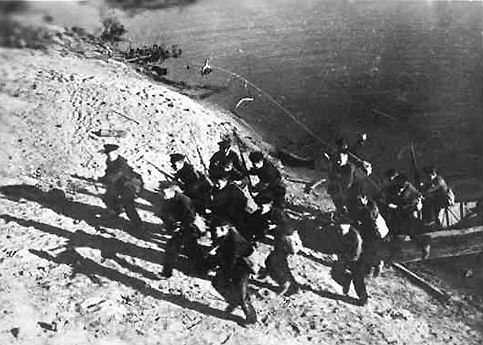
In Stalingrad for example, Navy Batallions manned the boats and defended them against air raids when crossing the Volga. They not only provided all the supplies of food and ammunitions to the frontline but also transported fresh reinforcements across the river. Some were taken as examples and shown in propaganda movies at the time, like the Sniper V. Zaitsev, or the Russian Marine Soviet marine Mikhail Panikakha, covered in flames after his Molotov cocktail was shot while attempting to throw it, but continuing on with another Molotov, destroying an enemy tank.
At Leningrad when its was no frozen, sailors manned the boats by night trying to provide some relief to the city and militarily, they took part in the Northern Front operation as part of the 7th Army (One naval infantry brigade).
In the whole Great Patriotic War, Soviet Marines performed over 114 landings, at platoons and companies level and served as regular infantry, used for riverine crossing, navigation, raids, and amphibious training regular infantry. They conducted four major operations:, including two during the Battle of the Kerch Peninsula, the Caucasus Campaign and the Landing at Moonsund, Baltic (battle of the lighthouse).
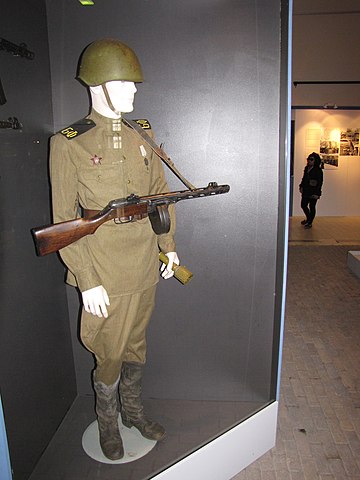 Five brigades and two battalions were also awarded Guards status given their records. Nine brigades and six battalions were awarded decorations, and other honorary titles. 122 naval infantrymen were awarded the title of Hero of the Soviet Union. However as shown in the head picture, naval infantry when not integrated in the regular army were poorly equipped. They lacked proper land uniforms (attributed when fully integrated into Army units) and helmets, same remark. However they could access to a large array of equipments ranging from rifles to submachine guns (PPSH for example) grenades, mines, flame-throwers, mortars, antitank artillery and howitzers. They however lacked armoured vehicles, apart rare exceptions, mosty improvized on site, which was possible was these units operated mostly close to shipyards.
Five brigades and two battalions were also awarded Guards status given their records. Nine brigades and six battalions were awarded decorations, and other honorary titles. 122 naval infantrymen were awarded the title of Hero of the Soviet Union. However as shown in the head picture, naval infantry when not integrated in the regular army were poorly equipped. They lacked proper land uniforms (attributed when fully integrated into Army units) and helmets, same remark. However they could access to a large array of equipments ranging from rifles to submachine guns (PPSH for example) grenades, mines, flame-throwers, mortars, antitank artillery and howitzers. They however lacked armoured vehicles, apart rare exceptions, mosty improvized on site, which was possible was these units operated mostly close to shipyards.
All this experience in amphibious contributed to the development of an operational art in combined arms operations. Treated as an elite due to their superior discipline and training, Naval Infantry started to be trained for paradroppings and in the end, performed even more than regular Soviet Airborne Troops (VDV) during the war.
Naval Infantry was disbanded in 1947 and the remainder transferred to the Coastal Defence Force. It was completely rethought and reorganized during the cold war, and from the 1970-80s with the arrival of numerous, large dedicated landing ships and hovercrafts, they started to access armour as well, practically all the inventory, with a premium on amphibious vehicles.
Links
apps.dtic.mil/
flamesofwar.com
weaponsandwarfare.com soviet-naval-infantry/
figurementors.com/ soviet naval infantry battles
warfarehistorynetwork.com soviet-naval-infantry/
wio.ru TBs
wio.ru MTBs
weaponsandwarfare.com soviet-mtbs/
navypedia.org russia/ generic
weaponsandwarfare.com soviet black sea naval infantry
Unbuilt ships of the Russian Imperial and Soviet fleet by Alexey Nikolaevich Sokolov


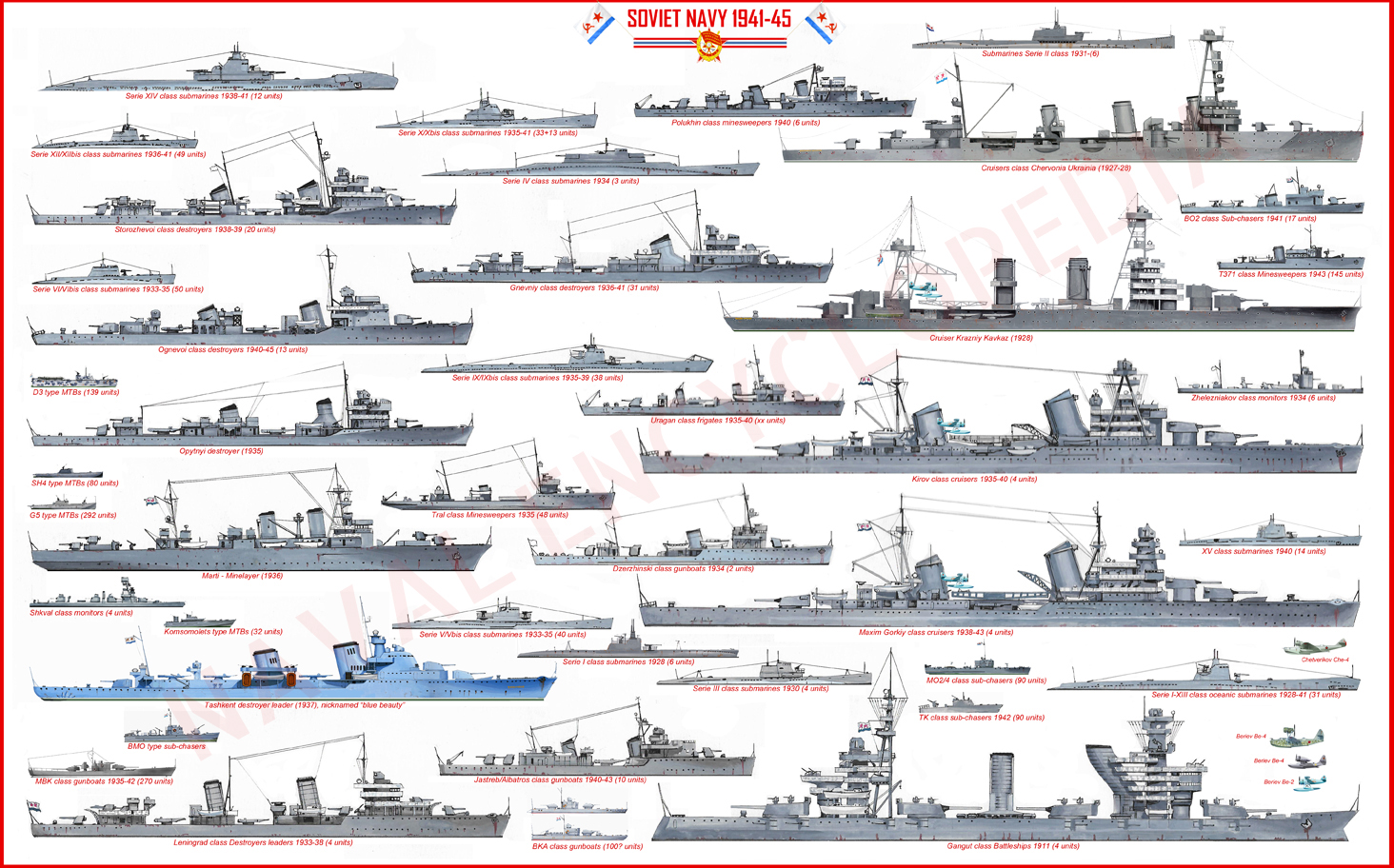
 Latest Facebook Entry -
Latest Facebook Entry -  X(Tweeter) Naval Encyclopedia's deck archive
X(Tweeter) Naval Encyclopedia's deck archive Instagram (@navalencyc)
Instagram (@navalencyc)





 French Navy
French Navy Royal Navy
Royal Navy Russian Navy
Russian Navy Armada Espanola
Armada Espanola Austrian Navy
Austrian Navy K.u.K. Kriegsmarine
K.u.K. Kriegsmarine Dansk Marine
Dansk Marine Nautiko Hellenon
Nautiko Hellenon Koninklije Marine 1870
Koninklije Marine 1870 Marinha do Brasil
Marinha do Brasil Osmanlı Donanması
Osmanlı Donanması Marina Do Peru
Marina Do Peru Marinha do Portugal
Marinha do Portugal Regia Marina 1870
Regia Marina 1870 Nihhon Kaigun 1870
Nihhon Kaigun 1870 Preußische Marine 1870
Preußische Marine 1870 Russkiy Flot 1870
Russkiy Flot 1870 Svenska marinen
Svenska marinen Søværnet
Søværnet Union Navy
Union Navy Confederate Navy
Confederate Navy Armada de Argentina
Armada de Argentina Imperial Chinese Navy
Imperial Chinese Navy Marinha do Portugal
Marinha do Portugal Mexico
Mexico Kaiserliche Marine
Kaiserliche Marine 1898 US Navy
1898 US Navy Sovietskiy Flot
Sovietskiy Flot Royal Canadian Navy
Royal Canadian Navy Royal Australian Navy
Royal Australian Navy RNZN Fleet
RNZN Fleet Chinese Navy 1937
Chinese Navy 1937 Kriegsmarine
Kriegsmarine Chilean Navy
Chilean Navy Danish Navy
Danish Navy Finnish Navy
Finnish Navy Hellenic Navy
Hellenic Navy Polish Navy
Polish Navy Romanian Navy
Romanian Navy Turkish Navy
Turkish Navy Royal Yugoslav Navy
Royal Yugoslav Navy Royal Thai Navy
Royal Thai Navy Minor Navies
Minor Navies Albania
Albania Austria
Austria Belgium
Belgium Columbia
Columbia Costa Rica
Costa Rica Cuba
Cuba Czechoslovakia
Czechoslovakia Dominican Republic
Dominican Republic Haiti
Haiti Hungary
Hungary Honduras
Honduras Estonia
Estonia Iceland
Iceland Eire
Eire Equador
Equador Iran
Iran Iraq
Iraq Latvia
Latvia Liberia
Liberia Lithuania
Lithuania Mandchukuo
Mandchukuo Morocco
Morocco Nicaragua
Nicaragua Persia
Persia San Salvador
San Salvador Sarawak
Sarawak Uruguay
Uruguay Venezuela
Venezuela Zanzibar
Zanzibar Warsaw Pact Navies
Warsaw Pact Navies Bulgaria
Bulgaria Hungary
Hungary

 Bundesmarine
Bundesmarine Dutch Navy
Dutch Navy Hellenic Navy
Hellenic Navy Marina Militare
Marina Militare Yugoslav Navy
Yugoslav Navy Chinese Navy
Chinese Navy Indian Navy
Indian Navy Indonesian Navy
Indonesian Navy JMSDF
JMSDF North Korean Navy
North Korean Navy Pakistani Navy
Pakistani Navy Philippines Navy
Philippines Navy ROKN
ROKN Rep. of Singapore Navy
Rep. of Singapore Navy Taiwanese Navy
Taiwanese Navy IDF Navy
IDF Navy Saudi Navy
Saudi Navy Royal New Zealand Navy
Royal New Zealand Navy Egyptian Navy
Egyptian Navy South African Navy
South African Navy






























 Ukrainian Navy
Ukrainian Navy dbodesign
dbodesign